
Professor Mehri Madarshahi
Former UN Senior Economist
Member of ICCSD Advisory Committee
Visiting Professor at IPP/SCUT
Since early time in history, mankind has fantasized about reaching the sky and touch the far away stars. This obsession remained throughout the 20th century, when exploring the universe was made more feasible with the inventions of new space technology. Exploring other planets allowed us to gather information about the universe and helped us better understand our own world.

The field of space technology is an ever evolving and highly dynamic modern industry and relies heavily on 5G communication and the Laser Communications Relay Demonstration (LCRD) as a new communications technology (using lasers to send and receive data between Earth and space at rates 10-100 times faster than conventional radio frequency transmission between satellites and those of us on Earth). These and other instruments such as robotics and artificial intelligence (AI) can also assist advancing this dream journey. Researchers hope that robots will be able to perform maintenance and repairs on existing space stations while aiding scientists with data collection and analysis. High-quality images of Earth from space can be used to examine changes to the Earth's climate and geology, as well as aid with disaster preparation.
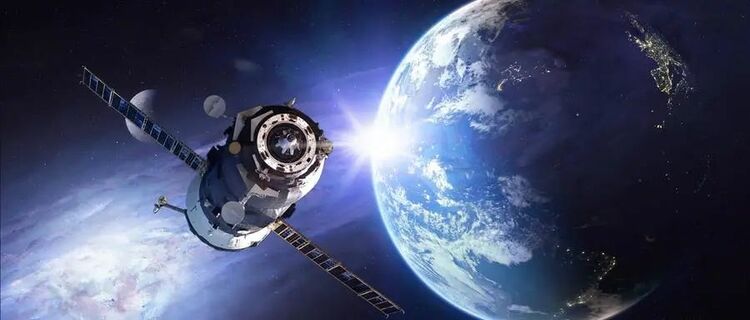
The Kepler Telescope spotted potentially millions of planets within our universe that may support life, moving humanity ever closer to deep space explorations. Establishing colonies on other planets is likely to play a large role in space technology in the future. From 3D-printed homes on Mars to Martian outposts with nuclear energy supplies, these extra-terrestrial territories are the new imaginative frontiers.
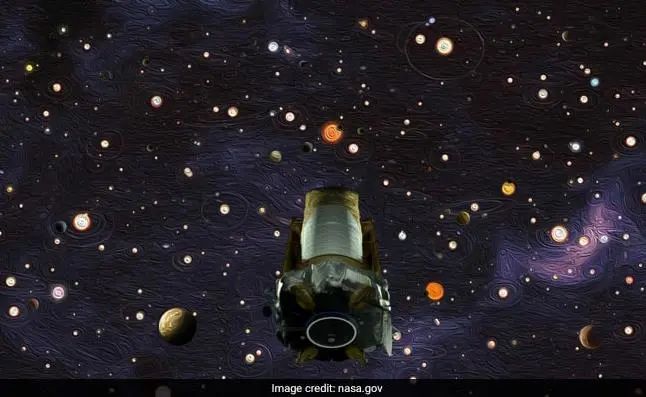
Kepler Telescope Source: Nasa
NASA's new moon project, the Artemis is to carry seeds and plants on board and with the help of robots wearing spacesuits designed for deep space and modern lunar landers it will carry functions assigned to humans, including repair and photography. It is hoped that Artemis can put a male and female astronaut on the Moon by 2024. After the lunar exploration, the mission's objective then is to send astronauts to Mars.
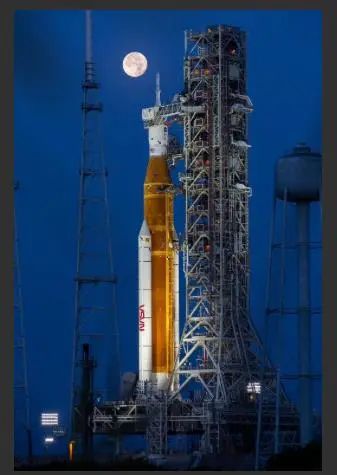
Artemis Moon Project Source: Nasa
As a background, the first landing on the moon took place in July 1969 when the Astronaut Neil Armstrong set foot on the surface of the moon and said, "that's one small step for a man, one giant leap for mankind". One key reason for the renewed interest in moon explorations now is to test many advanced technologies that will eventually help the scientists prepare for trips to Mars. In collaboration with NASA and Astrobotic Technology, Russia, Japan, and India also plan to deliver robotic landers to the lunar surface during 2022.

Launching satellites have become advantageous to human life. China's Galaxy Space has developed and launched 1,000 small satellites into space for its customers in industries, aviation, marine, and vehicle manufacturing. Meanwhile, another Chinese company, ADA Space, using AI plan a network of 192 satellites that will provide live streaming satellite imagery of the Earth.
The most powerful astrophysics telescope ever built, namely the James Webb Space Telescope, as a result of a NASA joint venture with ESA (European Space Agency) and the Canadian Space Agency, was launched from French Guyana in December 2021. This revolutionary telescope is considered as an unprecedented window into the universe's deep past. It is to unravel the hidden mysteries of the universe and serving thousands of astronomers worldwide. The Webb Telescope will study every phase in the history of our universe, ranging from the first luminous glows after the big bang, to the formation of solar systems capable of supporting life on Earth, to the evolution of our own solar system as well as planets orbiting other stars.
According to Knicole Colon, a Webb project scientist at NASA, "the first scientific results that have emerged in recent weeks, provided the first definitive detection of carbon dioxide in the atmosphere of an exoplanet, the successful detection of carbon dioxide demonstrates the acuity of Webb's vision and holds promise for future examination of distant planets that might harbor life."

Source: Nasa
At present, what is happening is a lot of fast science, conducted "in real time," as astrophysicist Jeyhan Kartaltepe of the Rochester Institute of Technology puts it: "Webb telescope is already challenging what astronomers thought they knew. Webb telescope sees surprisingly massive distant galaxies leading to questions about early galaxy formation".
Space-based technologies, have a direct and important impact on the enhanced scientific understanding of the earth science. These include remotely sensed data on water cycles, air quality, forests and other aspects of the natural environment. These surveying and monitoring tools provide valuable information on the state of ecosystems, by offering valuable support for positive environmental action, including conservation and sustainable resource management.
In addition, work to strengthen multi-hazard early warning systems in Pacific island countries, supported by the Government of Japan and other key partners such as the Indonesian Agency for Meteorology, Climatology and Geophysics, assisted those countries in the use of statistical and geospatial data as a key component of early warning systems through technical training, regional workshops and pilot projects.
Space activities and technologies contribute to tackling major challenges such as climate change, disaster management, food security, transport development, and the protection of the environment and of scarce resources. They also boost the competitiveness of industry well beyond the space sector, thereby contributing to job creation and socio-economic development in almost all economic areas worldwide. Space technologies also accelerate the research and technology development.
Space technology is also crucial for the continued observations and long-term monitoring of the Sun's effects on Earth's environment and climate, for aiding climate change modelling, and for the observation of the change in the ozone layer and its effects on the environment and human health, to mention but a few.
In recent decades, the situation in outer space has changed substantially. The international community is increasingly dependent on space-based platforms for economic development, communications, combating climate change and ensuring global peace and security.
Space technology is specifically recognized as one of the keys to achieving the 17 Sustainable Development Goals by 2030, as set out by the United Nations. A great example is the reflective materials originally developed to conserve heat in spacecraft, which are now commonly used to insulate buildings on Earth. This means that world governments are increasingly investing in space innovation with the primary purpose of tackling challenges caused by climate change on Earth.
One of these initiatives is MethaneSat, designed to identify and track sources of methane emissions on Earth. This is vital, as according to the Inter-Governmental Panel on Climate Change (IPCC), methane emissions alone are accountable for around half of the rise in global temperature since the start of the industrial era.
The Galileo project shows our innovative, autonomous, and cooperative approach to space. It is a state-of-the-art global satellite navigation system, providing a highly accurate, guaranteed global positioning service under civilian control.
Copernicus is the long-term European Union Earth observation and monitoring programme. It is a user-driven programme of six families of dedicated, EU-owned Earth observation satellites and instruments - the so-called Sentinels – and of the 6 Copernicus Services in the fields of atmosphere-, marine- and land-monitoring, climate change, emergency management and security.
On 26 October 2018, the General Assembly adopted resolution 73/6, entitled "Fiftieth anniversary of the first United Nations Conference on the Exploration and Peaceful Uses of Outer Space: space as a driver of sustainable development". In this resolution, the General Assembly emphasized the need to build stronger partnerships and international cooperation and coordination in the exploration and peaceful uses of outer space at all levels and among the participants representing the space community, in order to enhance the contribution of space activities for the realization of the 2030 Agenda and the Sustainable Development Goals and the targets contained therein.
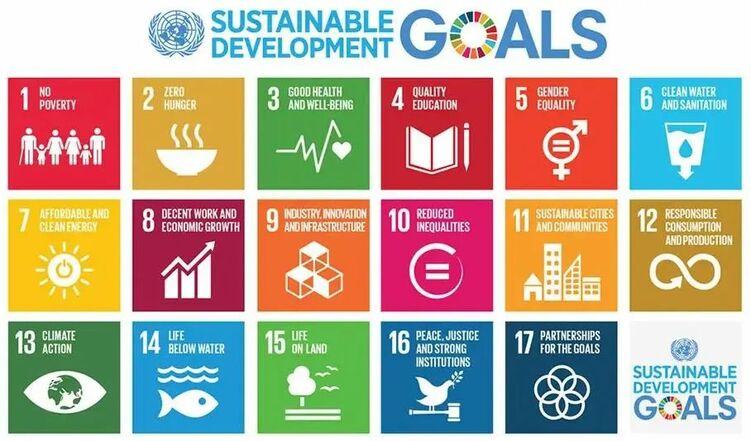
Also in that resolution, the General Assembly invited the Committee on the Peaceful Uses of Outer Space to continue to develop, on the basis of the results of the UNISPACE+50 process, a "Space2030" agenda and implementation plan, and acknowledged the importance of global partnership and strengthened cooperation among Member States, intergovernmental and non-governmental organizations, industry and private sector entities in fulfilling the "Space2030" agenda and its implementation plan.
A series of high-level forums launched by the UN Office for Outer Space Affairs on the theme "Space as a driver for socioeconomic sustainable development" has given the space community an opportunity to address cross-sectoral matters by integrating the economic, environmental, social, policy and regulatory aspects of space activities into the pursuit of global sustainable development, as well as to forge new partnerships and strengthen unified efforts at all levels and among all relevant stakeholders in the space sector.( A/AC.105/12008/16)
The work of World Meteorological Organization (WMO), a specialized agency of the United Nations and the United Nations system's authoritative voice on weather, climate, water and related environmental services, is carried out in close partnership with the national meteorological and hydrological services of its 186 member States and 6 member territories. Through information gathered by their satellite systems. WMO has established the goal of expanding cooperation between the various stakeholders participating in the global weather enterprise. That goal is in line with the 2030 Agenda, which also highlights the need for more partnerships between the public and private sectors in order to achieve the Sustainable Development Goals.
By paragraph 70 of the 2030 Agenda, Member States launched a technology facilitation mechanism to support the implementation of the Sustainable Development Goals. The mechanism is aimed at facilitating multi-stakeholder collaboration and partnerships through the sharing of information, experiences, best practices and policy advice among Member States, civil society, the private sector, the scientific community, United Nations entities and other stakeholders.
The mechanism comprises the following: the United Nations inter-agency task team on science, technology and innovation for the Sustainable Development Goals, which included a group of 10 representatives from civil society, the private sector and the scientific community; a collaborative multi-stakeholder forum on science, technology and innovation for the Sustainable Development Goals; and an online platform that acts as a gateway for information on existing initiatives, mechanisms and programmes related to science, technology and innovation. The fourth annual multi-stakeholder forum on science, technology and innovation for the Sustainable Development Goals took place on 14 and 15 May 2019 at United Nations Headquarters and the theme was "Science, technology and innovation for ensuring inclusiveness and equality, with a special focus on Sustainable Development Goals 4, 8, 10, 13, and 16".
Partnerships are vital for the work of the four global observing systems (the Global Climate Observing System, the Global Ocean Observing System, the WMO Integrated Global Observing System and the global terrestrial networks). The Global Climate Observing System, sponsored jointly by WMO, the Intergovernmental Oceanographic Commission of the United Nations Educational, Scientific and Cultural Organization (UNESCO), the United Nations Environment Programme and the International Science Council.
The UK space agency has recently announced funding for a number of projects that will get underway next year, including one spearheaded by Global Satellite Vu aimed at using infra-red cameras on satellites to monitor the level of thermal emissions from homes and businesses. Another project named TreeView, established by the Open University and funded by the UK Space Agency, is using satellite imagery to map and track deforestation.(Forbes, 28 August 2022).
Our interaction with space - as mentioned above - is reshaping the global economy and geopolitics. We rely on it for navigation, climate change research and weather forecasting, communication, and military operations. Many different countries are now active in space, and much of the world depends on space-based services. Private interests are increasingly pushing the boundaries of related technology and norms, and their funding of space exploration has created new capabilities and the potential for broadly-shared benefits. However, we must ensure that robust policies are in place to preserve both the safety and sustainability of space exploration.
Climate change has been called the defining challenge of our time. Its impacts are already evident and will intensify over time if left unaddressed.
Human actions have had an indisputable impact on the Earth's natural environment. Human activities have contributed to deforestation, desertification, soil degradation, depletion of the ozone layer and climate change.
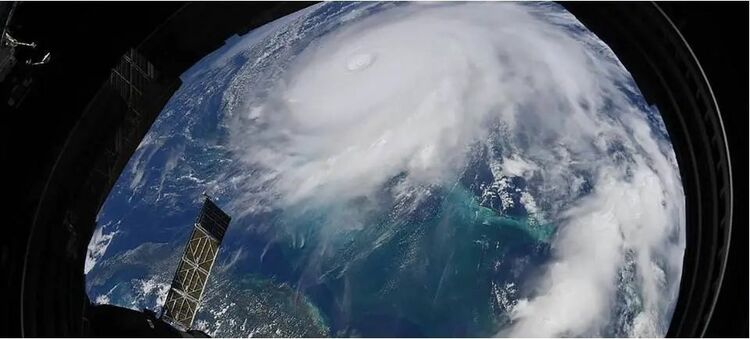
Hurricane Dorian seen from the International Space Station on September 2, 2019 Source: NASA
With the increased number of users of space, there is also an increased concern regarding the security of space. The relevant international law deriving from the outer space treaty regimes does not extend far in terms of establishing clear rules for an increasingly congested domain. In recent times, new challenges have emerged to the safety and security of the space domain, including an increased number of users, the prevalence of large cubesat constellations, the exponential growth (and consequent potential for a vast increase) of space debris and the entry into the market of many commercial operators, none of which was contemplated or foreseen by the outer space treaty regime adopted some decades ago. Some of those commercial operators have even gone so far as to flout existing domestic space laws by conducting unauthorised launches. Several attempts have been made to fill these perceived gaps in international law with various resolutions, confidence building measures and codes of conduct – the so-called ‘soft law’. However, so far, technological innovations have gone faster than any adequate law to cope with their rapid progress.
Now that operators are starting to feel free to launch constellations composed of hundreds or thousands of satellites, the risk of collisions and subsequent clogging up of orbits increases. New technologies to clean up debris or service satellites in orbit could play an important role in ensuring the sustainable use of space. However, such missions could also give rise to concerns about the weaponisation of space. It is, therefore, indispensable to emphasis the need to foster increased international cooperation in establishing standards of responsible behaviour and sustainable use across the full range of space activity, strengthen commitments to non-interference in the peaceful exploration and use of outer space, facilitate equitable access to outer space and increase transparency of outer space activities.
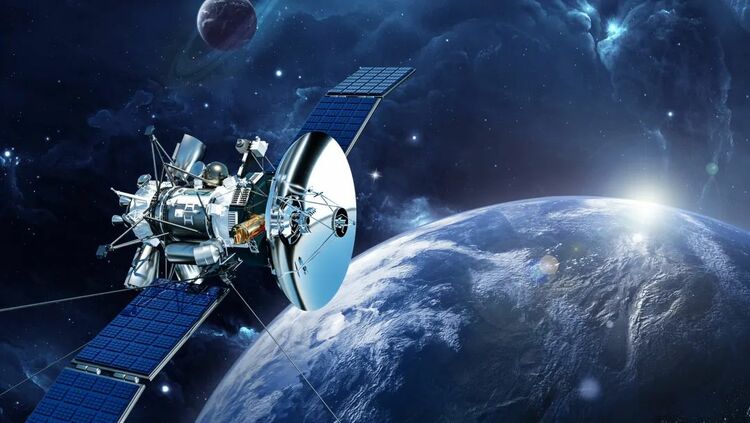
To tackle the potentially hazardous debris and catastrophic collisions in the space, this year, the ELSAD (End Of Life Services by Astroscale-Demonstration) mission was launched. ELSAD aims to clean up debris that will be left in space by future space missions by using magnets to grab floating debris and push them towards Earth. This debris is to burn up in the outer layers of the atmosphere.
The red light is on. The absence of commonly ratified regulations and clear rules on the exploration and use of outer space, including the moon and other celestial bodies, could pose an insurmountable challenge for humanity if it is not tackled with immediate care and with urgency. Irrespective of vested interests all such explorations must be carried out exclusively for peaceful and scientific purposes for the benefit of all countries, irrespective of their state of economic or scientific development.